Palm trees are associated with tropical beaches, sunny summer environments, and lovely, beautifully landscaped environments. Palms are distinguished by fan-shaped or feathery green leaves and fiber-covered stalks or stems.
The majority of palms, including date palms and coconut palms, sprout in warmer regions. Some palm species are considerate of cooler regions and freezing temperatures. Some palm tree cultivars can also be grown as houseplants.
Palm trees add an exotic flair to any yard. There are many types of palm trees in South Africa, which make it difficult to find a South African orchard that doesn't have one.
South Africa is home to six indigenous palms:
- Phoenix reclinata
- Hyphaene petersiana
- H. coriacea
- Borassus aethiopum
- Raphia australis
- Jubaeopsis caffra
There are numerous types of palm trees in the world. Undoubtedly, indigenous palm trees are highly adaptable to environmental circumstances, but some more exotic species can be progressively increased.
Table of Contents
Types of Palm Trees in South Africa
1. Phoenix reclinata
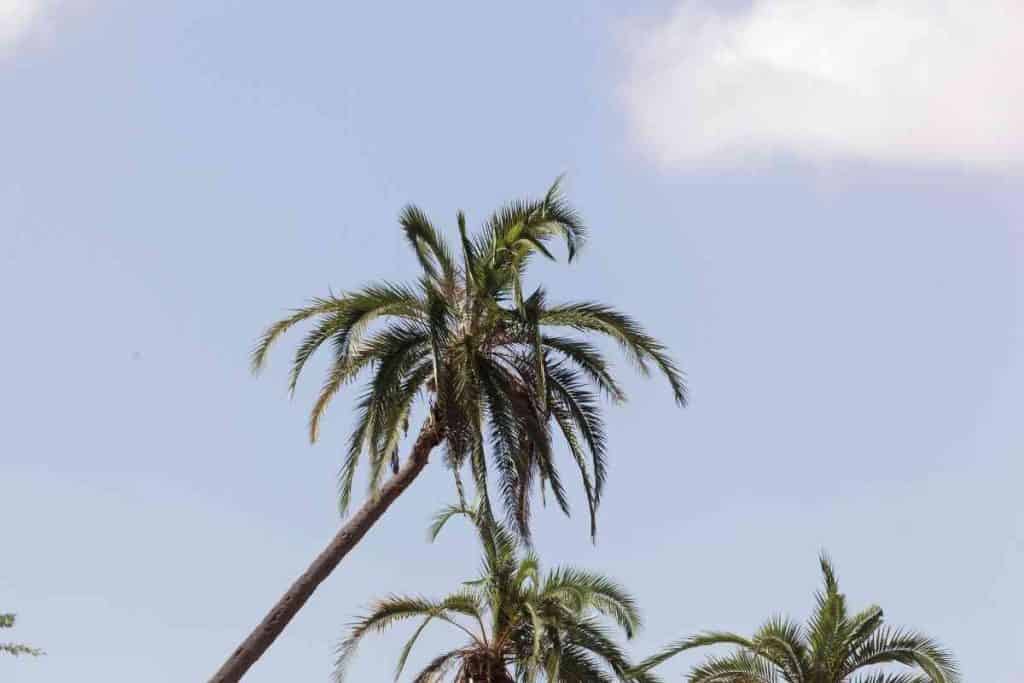
With its distinctive elongated, slanted stems, this elegant palm is found in waterways, bush, and woods in the country's east. It is often connected with water, whether on the banks of rivers or in marshes.
Phoenix reclinata can grow roughly 12 m tall, but it is usually between 3 and 6 m tall. It can be single or multi-stemmed, creating a solid, shrubby cluster. The foliage construct caps at the trunks' upper edge and curving bright green young shoots.
The forest date palm generally grows from the Eastern Cape in South Africa to Egypt. It prefers riverbanks and wetlands, though they can be encountered in rangelands if the groundwater is sufficient.
Because the roots are usually submerged in water, it would be considered of humid condition in crop production. It will tolerate light frost, but this will presumably affect the final shape, making the palm thick and stubby rather than long and classy.
See Also: Types of Indoor Palm Trees
2. Hyphaene Petersiana or Vegetable Ivory
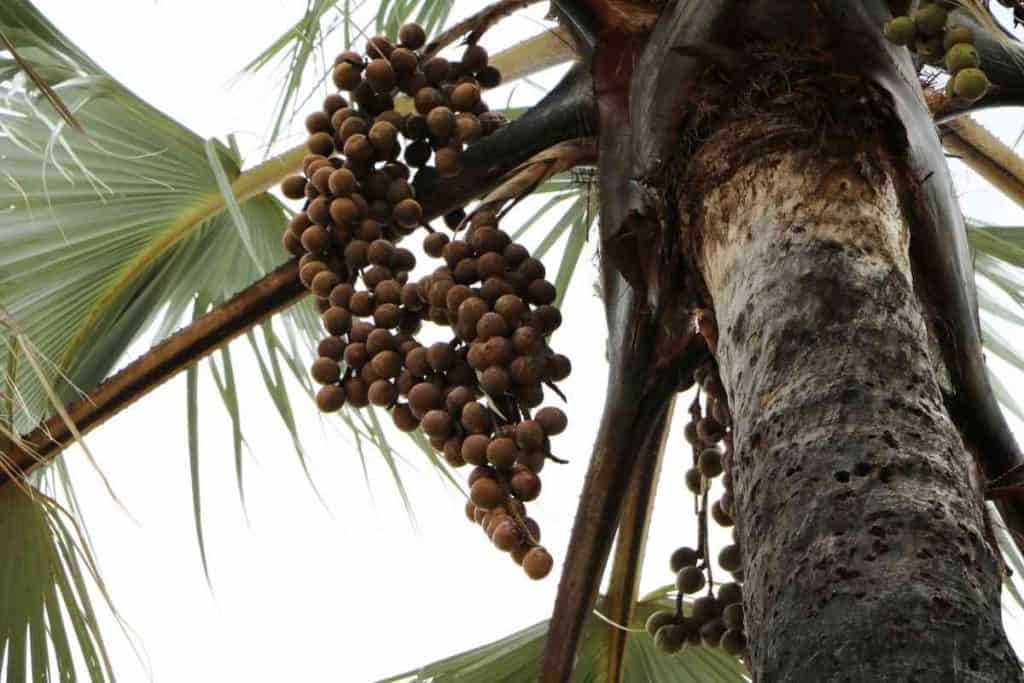
Vegetable ivory or hyphae petersiana is typically a humongous leafy fan palm tree that can grow up to 25 meters tall. Most of the time, it tends to grow on a single, elongated stem, but it does sucker up to other branching stems as occasionally seen.
The stem bottom is elevated on a volume of root systems, and the trunk is frequently swollen 1 – 2 meters below the crown.
The tree has a crown of large, gray-green leaves and bears large, round fruit with a hard white nut (from which comes the common name of vegetable ivory)
Locals widely use a true multi-purpose tree as a source of food and materials for baskets and various other items.
Marshy areas of drained areas, often close to rivers, mostly along watercourses, serve as habitats for the Vegetable Ivory. In East Africa, it is frequently found upstream on anionic soils with a high water table, while in South Africa, it is more prevalent near the coast.
The plant needs at least a warm climate, favoring hot and dry conditions. They are likely to develop well in areas of heavy rainfall as long as the ground is well-drained. Plants that have been established are extremely drought tolerant.
If fruit and seed are necessary, dioecious genera with male and female types must be cultivated.
3. H. coriacea
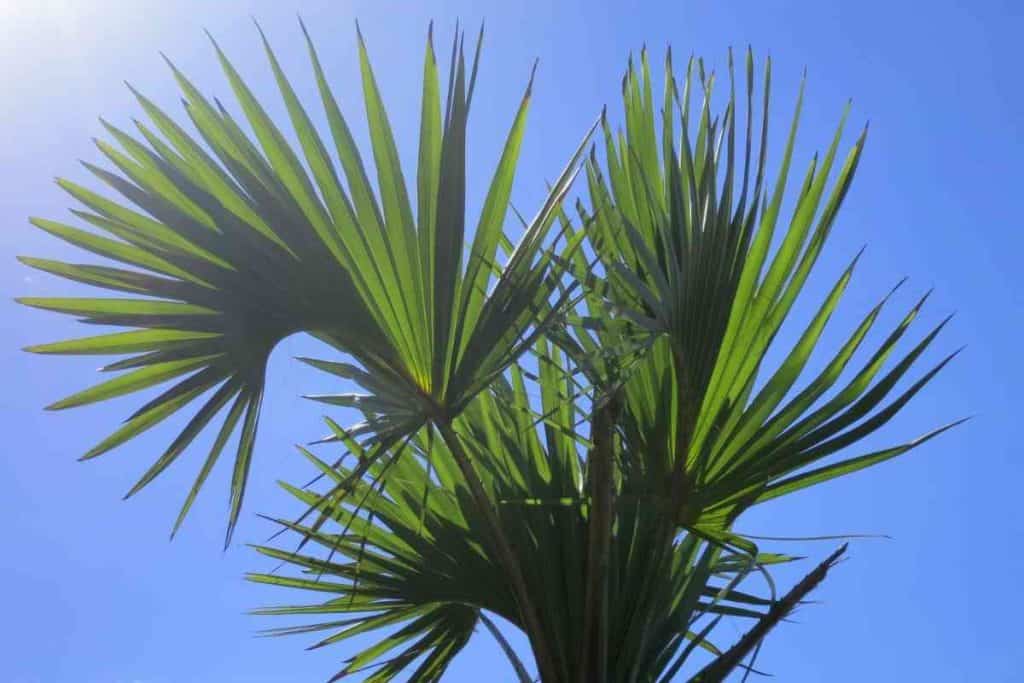
The moniker Hyphaene coriacea has been extensively misapplied and frequently refers to other species. Furthermore, more current fieldwork has underscored the species' elastic properties and the gradual transition in form from the dwarf, coastal dune form to the much more upright type.
This palm is frequently seen thriving close, though not on, embankments in knobthorn-marula savanna on basalt.
They are essential plants that provide drink and fiber, amongst many other things, not just for local consumption but also for sale.
Tongaland (KZN inland of St Lucia and east of the Lebombo) artisan kiosks sell a wide range of baskets, mats, and other items made of Lala palm fibers to tourists. The acquisition of these memorabilia is incentivized because the material used to make them is abundantly reusable.
4. Raphia Australis
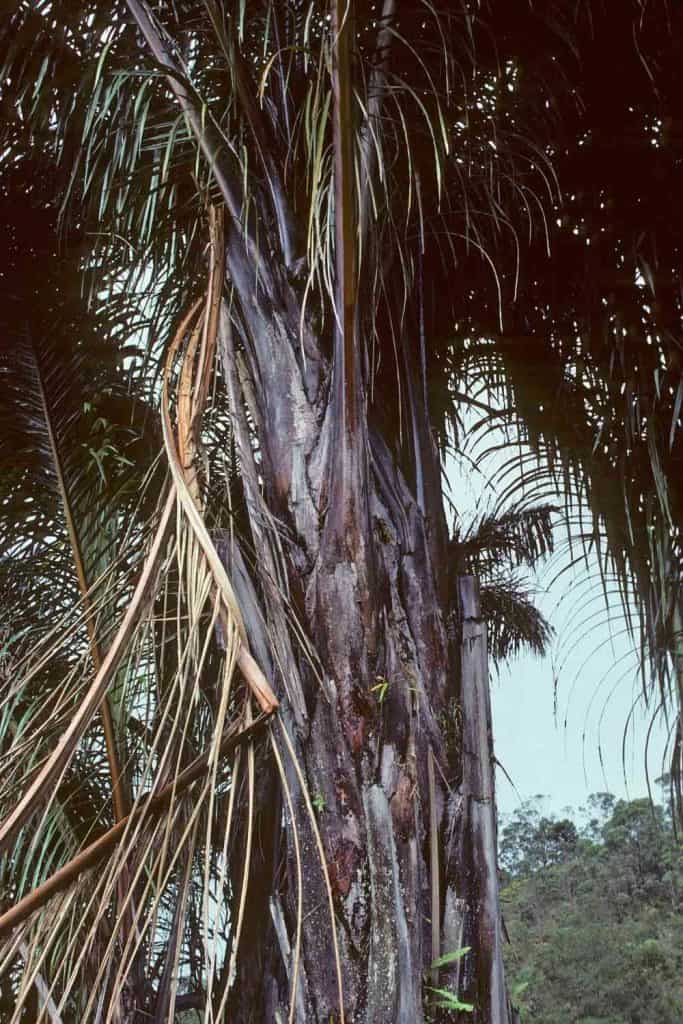
The plant epithet australis implies "southern," as opposed to australiensis, which also means "Australian."
Raphia consists of approximately 20 cultivars, the majority discovered in tropical Africa and Madagascar; one is found in South America, and the other is observed in southern Africa, traversing the border between KwaZulu-Natal and Mozambique.
The Kosi palm's native habitat is limited to a small area spanning from just south of Kosi Bay to 40 kilometers or further inland of Maputo. Mtunzini's community evolved from farmed trees. These trees, like mangroves, are found on seasonal changes in flooded dunes and have pneumatophores (breathing roots).
5. Jubaeopsis caffra or Pondo Palm
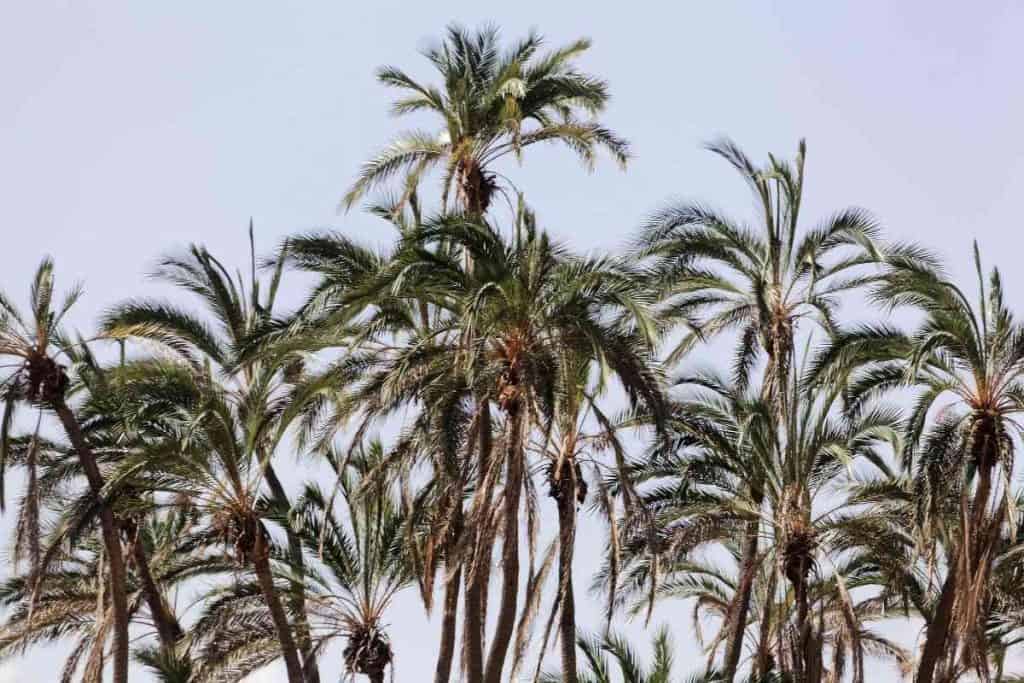
A South African palm with a living family member in Chile (South America) sounds like sci-fi. However, it is not. It's right here.
While not in fruit, this palm is more than comparable to the wild date palm (Phoenix reclinata) in South Africa. Nevertheless, two easily discernible leaf characteristics serve to distinguish them.
First, the smallest leaves of a date palm leaf are reinforced into spikes, whereas they are smooth in the Pondo palm. Second, while the leaflets throughout most palms are rolled up into a V, wrap in the center in a date palm and focus down and up in the Pondo palm.
6. Borassus aethiopum
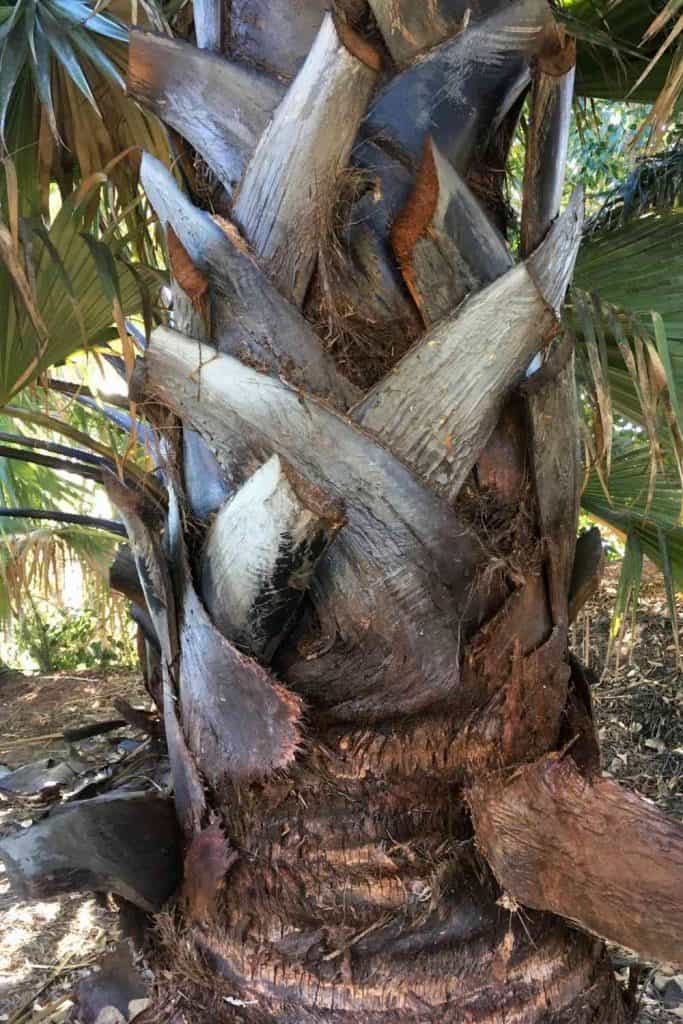
The African fan palm is a sturdy to a humongous, solitary, shrubby tree with an elongated stem that can eventually reach 20 – 30 meters long by 40 – 50cm diameter, thickened at the base to 85cm, and edematous just above mid-point to about 80cm diameter in old age at around 50 years.
The big, fan-shaped foliage can grow up to 4 m in length and 3 meters wide, split down the middle into leaflets, and prickly at the base.
A multifunctional tree that is extensively used for food, medicine, and various commodities. The entire tree is utilized. Local markets frequently sell the fruits. The plant is also cultivated for aesthetic reasons.
Frequently Asked Questions
How do I recognize a palm tree?
The unique form of the palm leaves is primarily used to identify palm plant species. Palm tree leaves are either pinnate or palmate. The trunk shape is yet another way to determine the category of a palm tree.
How long does it take a palm tree to die?
A palm tree has a life expectancy of 7 to 8 generations. However, some palm trees only live for forty years, while others can live for 100 years. Because this is wholly reliant on a palm tree species, it is ideal for investigating the various types before settling on one.
How many different types of palm trees are out there?
According to research, there are approximately 2600 species of palm trees, many of which are cultivated in tropical, subtropical, and warm climates.
What is the height of the world's highest palm tree?
The Valle de Cocora, located high in the Colombian Andes in Los Nevados National Natural Park, is a sanctuary for the world's highest palm trees.
Conclusion
Palms are an expressionistic and distinguishable plant family found on the beach, in the smoggy coziness of a wooded area, or bobbing in a lively hammock daydream. Even if you've never visited a tropical region of the world, you're probably familiar with their wobbling green foliage.
Palm trees are found all over the world. They are also a very important plant due to their numerous applications. As a result, palms have played an important role in human history and society.
If you would like to integrate palms into your orchard or garden, the appropriate species (and whether it's even possible) will be heavily influenced by where you live.




